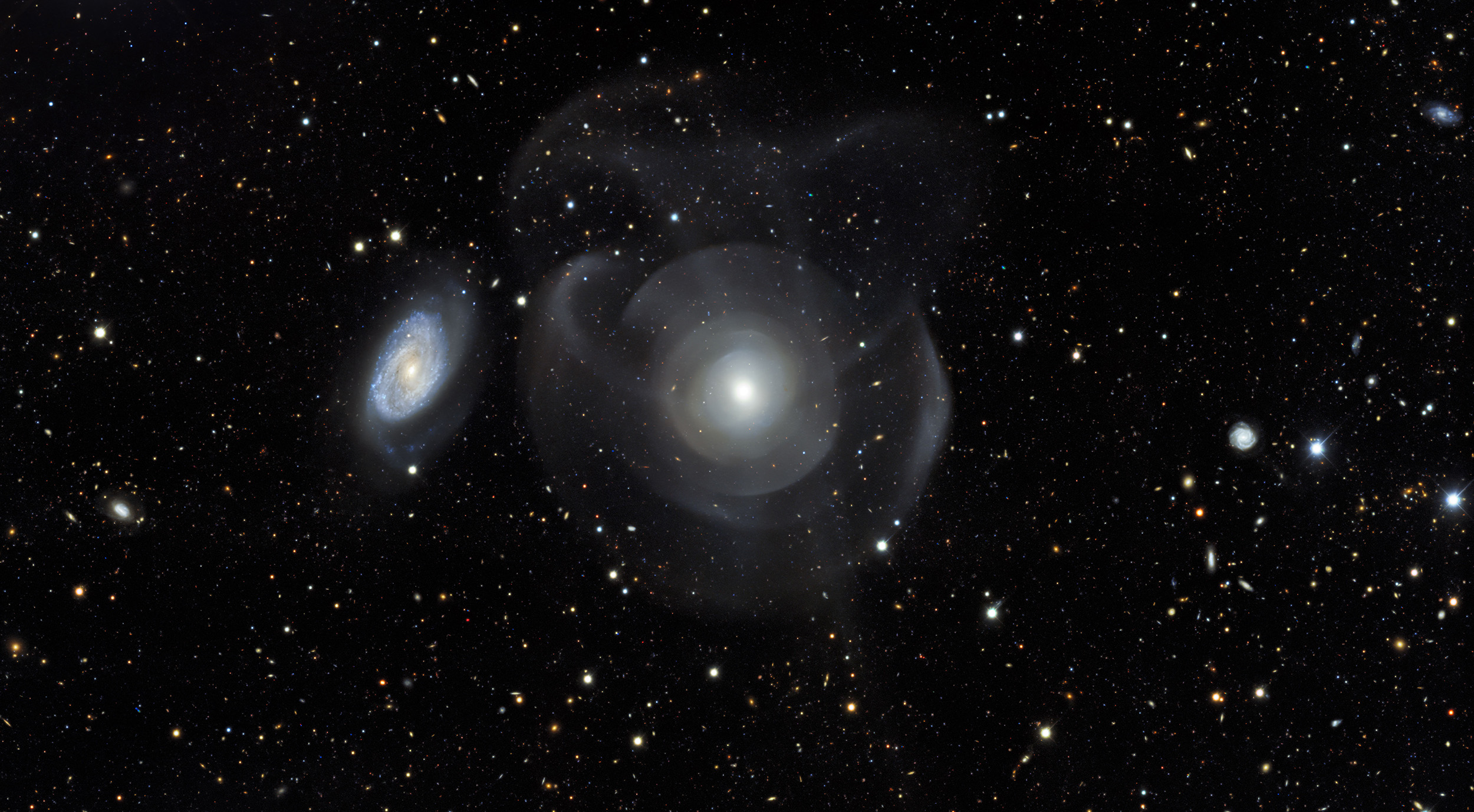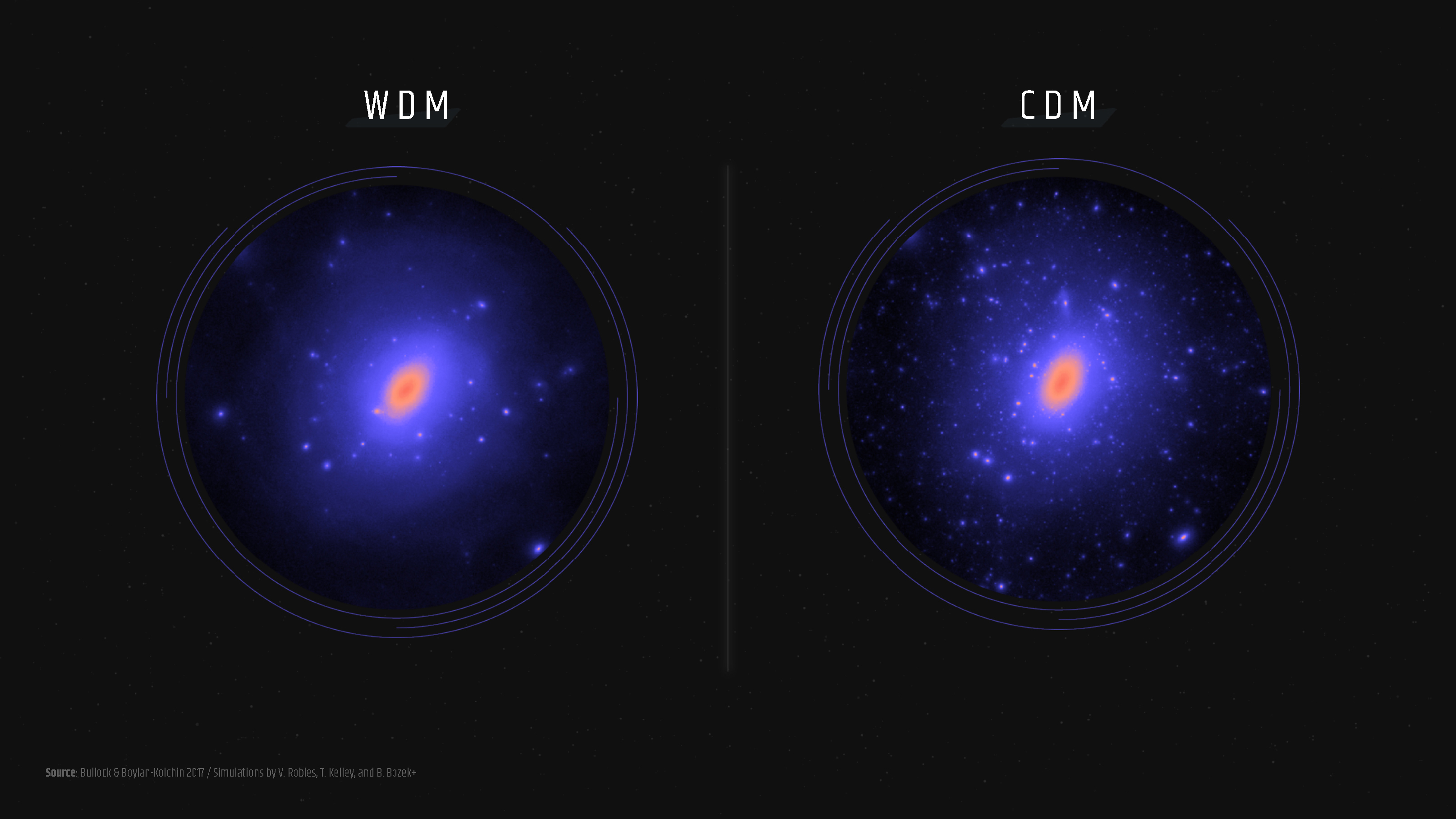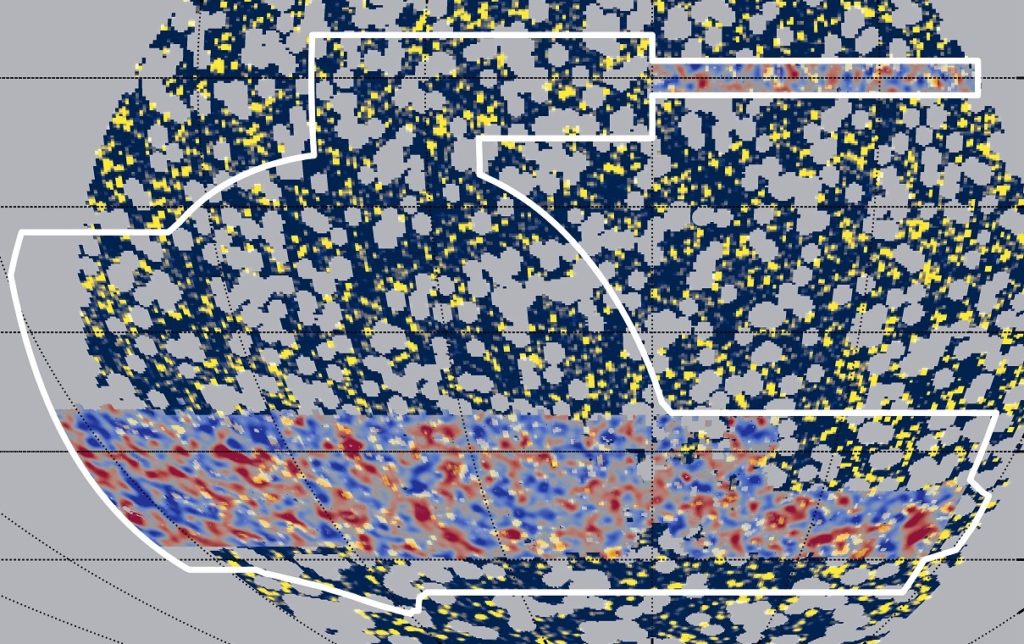El Estudio de la Energía Oscura (también conocido en inglés como Dark Energy Survey) fue un programa de observación de seis años diseñado para explorar el cosmos con el fin de comprender mejor la energía oscura, un concepto complejo que se desarrolló cuando los científicos se dieron cuenta de que el Universo parecía estar rompiendo sus propias leyes de la física –supuestamente inmutables. Pero, ¿cómo se observa algo que no se ve? ¿Y por qué los científicos están tan convencidos de que realmente hay algo que buscar?
Tag: Dark Energy Survey
The Dark Energy Survey: Uncovering the Invisible
The Dark Energy Survey was a six-year observing program designed to survey the skies in order to better understand dark energy — a complex concept that developed when scientists realized that the Universe seemed to be breaking its own supposedly immutable laws of physics. But how do you observe something that cannot be seen? And why are scientists so convinced that there is really something to search for?
Billions of Celestial Objects Revealed in Gargantuan Survey of the Milky Way
Astronomers have released a gargantuan survey of the galactic plane of the Milky Way. The new dataset contains a staggering 3.32 billion celestial objects — arguably the largest such catalog so far. The data for this unprecedented survey were taken with the Dark Energy Camera, built by the US Department of Energy, at the NSF’s Cerro Tololo Inter-American Observatory in Chile, a Program of NOIRLab.
15 spectacular photos from the Dark Energy Camera
From high atop a mountain in the Chilean Andes, the Dark Energy Camera has snapped more than one million exposures of the southern sky. The images have captured around 2.5 billion astronomical objects, including galaxies and galaxy clusters, stars, comets, asteroids, dwarf planets and supernovae.
Dark Energy Survey releases most precise look at the universe’s evolution
The Dark Energy Survey collaboration has created the largest ever maps of the distribution and shapes of galaxies, tracing both ordinary and dark matter in the universe out to a distance of over 7 billion light years. The results are based on the first three years of data from the survey.

Dark Energy Survey makes public catalog of nearly 700 million astronomical objects
The international collaboration, including Fermilab, the National Center for Supercomputing Applications, NOIRLab and others, releases a massive, public collection of astronomical data and calibrated images from six years of surveys. This data release is one of the largest astronomical catalogs issued to date.

Dark Energy Survey census of the smallest galaxies hones the search for dark matter
Scientists on the Dark Energy Survey have used observations of the smallest known galaxies to better understand dark matter, the mysterious substance that makes up 85% of the matter in the universe. The smallest galaxies can contain hundreds to thousands of times more dark matter than normal visible matter, making them ideal laboratories for studying this mysterious substance. By performing a rigorous census of small galaxies surrounding our Milky Way, scientists on the Dark Energy Survey have been able to constrain the fundamental particle physics that governs dark matter.

Connecting the dots in the sky could shed new light on dark matter
Astrophysicists have come a step closer to understanding the origin of a faint glow of gamma rays covering the night sky. They found that this light is brighter in regions that contain a lot of matter and dimmer where matter is sparser – a correlation that could help them narrow down the properties of exotic astrophysical objects and invisible dark matter.

Six Berkeley Lab Scientists Named AAAS Fellows
Six scientists from the Department of Energy’s Lawrence Berkeley National Laboratory (Berkeley Lab) have been named Fellows of the American Association for the Advancement of Science (AAAS).